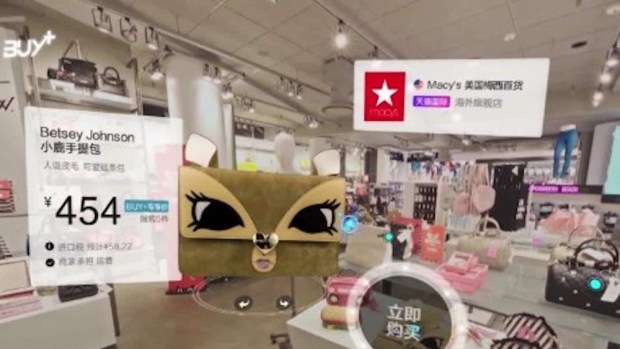Alibaba And The Emergence Of VR eCommerce

While not much of an event, yet, on North American shores, elsewhere in the world the countdown to Singles Day is underway. The price of cardboard is soaring in China for fear that boxes will run out, retailers nationwide have started advertising Singles Day sales and courier services are staffing up for what is estimated to be a 1 billion delivery day.
Although the holiday has been around since the 1990s among Chinese university students affirming their pride in being unattached, the $20 billion shopping event is largely a result of Alibaba and its marketplace — when, in 2009, the eCommerce company had the visionary idea to move the made-up holiday online, encouraging all those proud singles to treat themselves to a little present.
Or — as the spending figures actually indicate — a nice big present.
As Alibaba’s Founder and Chairman Jack Ma has said many times — at varying levels of excitement — the massive internet retail conglomerate doesn’t just want to change the where of consumer shopping; it wants to change the how as well.
Which is why, since the last Singles Day celebration, Jack Ma and Alibaba have added a new shopping option to the menu for consumers: website, mobile app and, now, virtual store.
Alibaba’s eCommerce goods can be accessed via a virtual reality (VR) headset or through a $0.15 cardboard frame for their smartphone. Once plugged in, shoppers can use their phone to wander the aisles of a virtual store like Macy’s or Costco. Wander means walking, picking up items to examine them in 3D and making purchases with only a look.
The Buy+ experience — Alibaba’s name for its virtual reality shopping option — powers payment by allowing users to stare hard at floating buttons, thus making their selections. According to analysts, the goal for retailers is to leverage VR to made shopping online a less disconnected 2D experience, instead offering to wire consumers into a more natural shopping environment from the comfort of their own homes.
Developing VR, however, is costly and risky, since not that many consumers are wired into it at present.
“If brands could do it themselves, it would encroach on Alibaba’s ecosystem. So, this way the company is preempting that and building their own VR mall to keep these brands in their ecosystem,” says Jack Chuang of OC&C Strategy Consultants.
The bigger issue going forward is that VR is still in its infancy, along with the expensive headset technology that is meant to power the experience. So, how to press usage and motivate consumers into using those next-generation products?
Gamification is the simple answer. Instead of making shopping in a virtual world merely neat, Alibaba is also making it rewarding by placing benefits within its augmented and virtual worlds. The Singles Day event last year included the ability to find special red envelopes stashed within its digital stores — only visible to customers using AR/VR technology.
“Novelty,” claimed one official with knowledge of Alibaba’s plan for the Buy+ AR/VR development; it’s “a great way to get customers using a product. But from there, the question becomes: How can I actually use this for real benefits and real advances in how I shop today?”
Those innovations are still being developed and will soon be introduced to the market (though the official demurred whether Singles Day 2017 would be the time to see some of those advances). Although Alibaba has no hard use numbers for its more advanced VR buying options, the programs has been performing “well” so far.
As for life in the U.S., American technology is improving for VR. Apple made a special point of calling out all its AR/VR upgrades in its last major phone release, but it remains unclear if American shoppers want to explore virtual worlds like their counterparts in Asia.
“Asian countries like China, Japan, South Korea have more experience leapfrogging technology, and their consumers are more willing to adopt these new technologies. But there’s nothing to stop them from spreading to other countries as well,” Jack Chuang of OC&C Consultants commented on AR/VR’s exportability.
